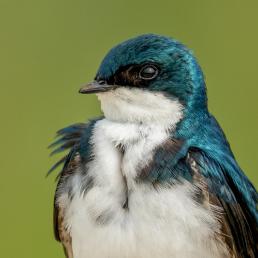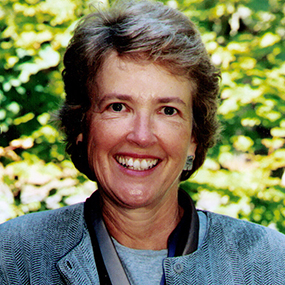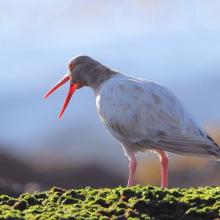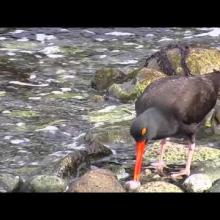

Join BirdNote tomorrow, November 30th!
Illustrator David Sibley and actor H. Jon Benjamin will face off in the bird illustration battle of the century during BirdNote's Year-end Celebration and Auction!
Black Oystercatchers prey on shellfish in the wave zone, especially mussels and limpets. The waves cause mussels to open often, making them easier to eat. The Black Oystercatcher nests on ledges just off shore, and its eggs and young suffer far less predation by mammals. Contrary to their name, oystercatchers rarely eat oysters. For more about the Black Oystercatcher, visit Cornell's AllAboutBirds.
BirdNote®
The Oystercatcher’s World
Written by Chris Peterson
This is BirdNote!
[Piping call of the Black Oystercatcher, heard over rocky shoreline]
We’re crouching on a rocky shoreline on the Pacific Coast — hearing the piping call of the Black Oystercatcher, a stocky black bird with bright red eyes and a stout, orange-red bill perfectly suited for jabbing limpets and mussels. Let’s listen again. [Repeat the piping call of the Black Oystercatcher.]
A strong ebb tide is flowing, creating whirlpools and tugging at the kelp. On nearby rocks, harbor seals, looking like huge taut sausages, have hauled out to rest. If we’re lucky today, we’ll hear some snorting! [Harbor seals snorting]
The oystercatcher is completely dependent on this marine shoreline for nesting and food, even in winter, when waves hit these rocks with awesome force. Yet what seems like an inhospitable environment to us must offer some advantages to the oystercatcher.
For one, wave-splashed mussels, the bird’s chief food, open more often, making them easier to attack and eat. For another, when the monogamous Black Oystercatcher nests on ledges just off shore, its eggs and young suffer far less predation by mammals. Now that’s something to celebrate! [Repeat the piping call of the Black Oystercatcher]
P.S. Contrary to their name, oystercatchers rarely eat oysters. For BirdNote, I’m Michael Stein.
###
Bird sounds provided by The Macaulay Library at the Cornell Lab of Ornithology, Ithaca, New York. Recorded by A.A. Allen.
Producer: John Kessler
Executive Producer: Chris Peterson
© 2014 Tune In to Nature.org November 2014/2018/2020 Narrator: Michael Stein
ID#111405BLOYKPLU BLOY-01b





